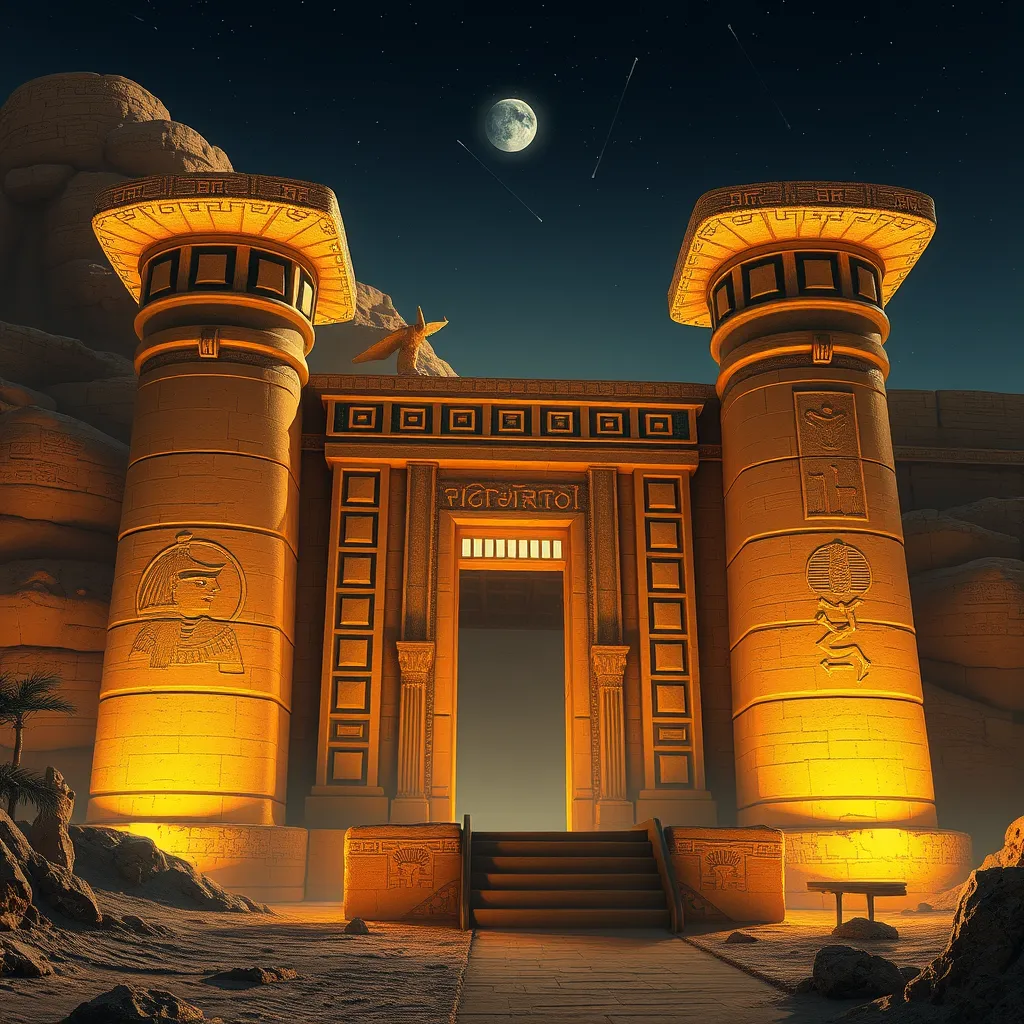The Duat: The Domain of Set
I. Introduction to the Duat
The Duat, often referred to as the realm of the dead, is a significant concept in Ancient Egyptian mythology. It serves as a mystical landscape where souls journey after death, encountering various challenges and judgments. The Duat is not merely a place; it embodies the beliefs and practices surrounding death and the afterlife in Ancient Egypt.
As a domain of both darkness and transformation, the Duat holds a crucial role in the cycle of life and death, representing the Egyptians’ understanding of the afterlife and their intricate rituals surrounding it.
II. The Role of Set in Egyptian Mythology
Set, known as the God of Chaos and Disorder, occupies a complex position in Egyptian mythology. Traditionally perceived as a malevolent deity, Set represents the untamed and chaotic aspects of nature. He is often associated with storms, desert landscapes, and the unpredictable qualities of life.
Historically, Set was worshiped in various regions of Egypt, particularly in Upper Egypt, where he was revered in certain contexts as a protector and a powerful force against chaos. His duality in mythology reflects both the fear and respect that the ancient Egyptians had for the forces of disorder.
III. The Geography of the Duat
The Duat is depicted in ancient texts and tomb paintings as a vast and diverse landscape, comprising various regions, each with unique characteristics. Some notable features include:
- The Waters of Chaos: A dark, chaotic expanse representing the primordial waters before creation.
- The Field of Reeds: A paradise-like area where the souls of the righteous could dwell eternally.
- The Hall of Ma’at: A judicial area where the souls are weighed against the feather of Ma’at, symbolizing truth and justice.
These symbolic representations serve not only as physical descriptions but also as metaphors for the moral and spiritual journeys that souls undergo in the afterlife.
IV. The Duat as a Place of Judgment
Central to the concept of the Duat is the ceremony known as the “Weighing of the Heart.” In this ritual, the deceased’s heart, representing their soul and deeds during life, is weighed against the feather of Ma’at. The outcome of this judgment determines the fate of the soul:
- If the heart is lighter than the feather, the soul is deemed worthy and granted passage to the Field of Reeds.
- If the heart is heavier, it is devoured by Ammit, a fearsome creature that embodies the consequences of a life lived in chaos and disorder.
Set’s role in this judgment process is complex; while he is often seen as a chaotic figure, he also represents the inevitable nature of disorder and death. His presence in the Duat underscores the balance between chaos and order in the universe.
V. Myths and Legends Associated with Set in the Duat
Numerous myths and legends illustrate Set’s tumultuous nature and his interactions with other deities. One prominent story involves Set’s battle with his brother Osiris, which symbolizes the eternal struggle between order (Osiris) and chaos (Set). This conflict often plays out in the Duat, where the balance of power among the gods is continually tested.
These myths serve multiple purposes:
- They highlight the duality of existence, illustrating the necessity of both chaos and order.
- They provide moral lessons about the consequences of actions and the importance of maintaining balance in life.
The narratives surrounding Set and the Duat deepen our understanding of the ancient Egyptian worldview and their approach to the afterlife.
VI. The Duat in Funerary Practices
The concept of the Duat significantly influenced Ancient Egyptian funerary practices. The belief in an afterlife led to elaborate burial customs designed to ensure safe passage through the Duat. Key aspects of these practices include:
- Tomb Designs: Tombs were often constructed to resemble the Duat, with intricate paintings and inscriptions that guided the deceased through the afterlife.
- Funerary Artifacts: Items such as amulets, food, and tools were placed in tombs to assist the deceased on their journey.
- Funerary Texts: Texts like the Book of the Dead provided spells and guidance for navigating the challenges of the Duat.
Artifacts and texts related to Set and the Duat found in tombs reveal the Egyptians’ deep-seated beliefs about death and the afterlife, emphasizing the need for protection and guidance in the face of chaos.
VII. The Duat in Modern Interpretations
In contemporary culture, the Duat and the figure of Set have influenced various forms of literature, art, and media. Their themes of chaos, order, and the afterlife resonate with modern audiences, often serving as metaphors for personal struggles and societal conflicts.
Academically, the Duat continues to be a subject of interest, with scholars exploring its implications for understanding ancient beliefs and practices. The enduring legacy of the Duat provides valuable insights into the human experience, illustrating our timeless fascination with life, death, and the unknown.
VIII. Conclusion
In summary, the Duat holds immense importance within the context of Set and Egyptian mythology. It serves as a rich tapestry of beliefs surrounding death, judgment, and the afterlife, reflecting the complexities of existence. The interplay between chaos and order, as exemplified by Set’s role in the Duat, highlights the ancient Egyptians’ understanding of the universe’s dual nature.
As we reflect on the legacy of the Duat, it becomes clear that these ancient beliefs continue to resonate today, offering profound insights into our collective understanding of life, death, and the eternal quest for meaning.




